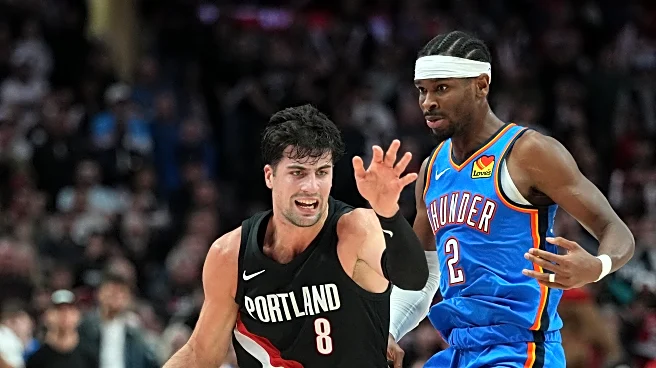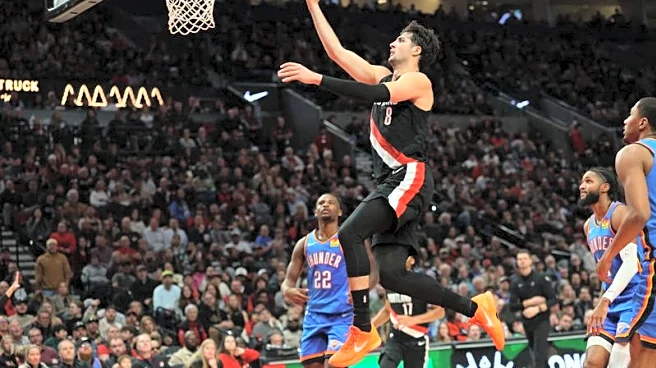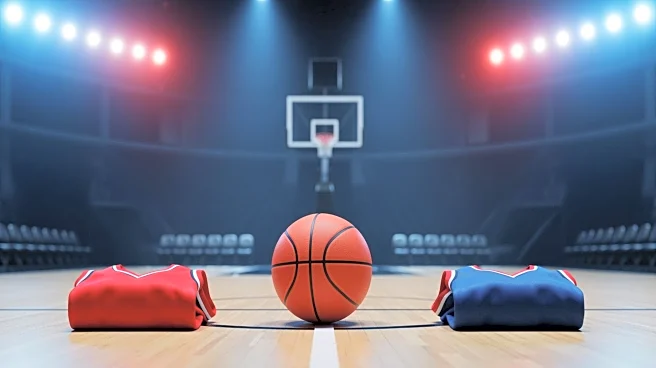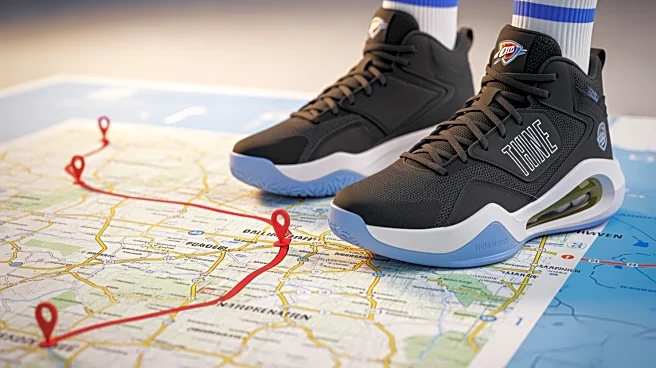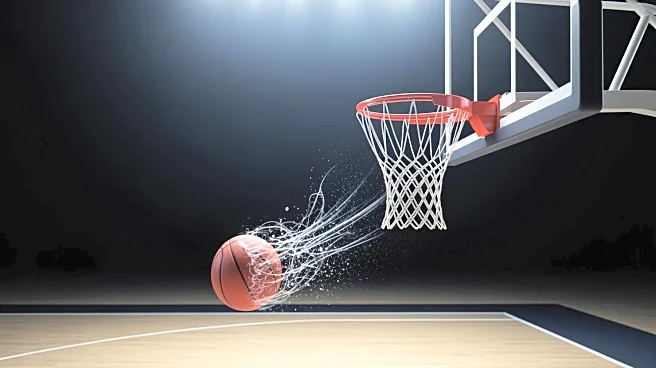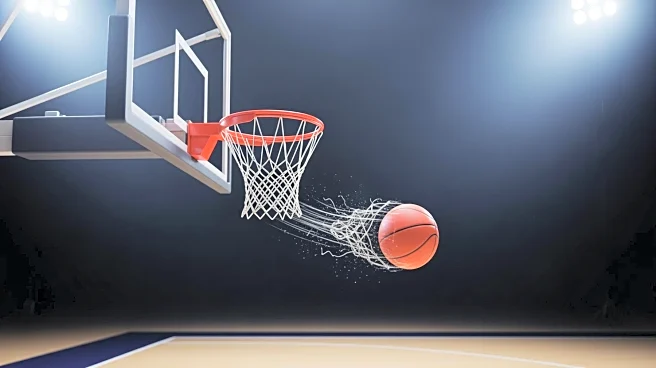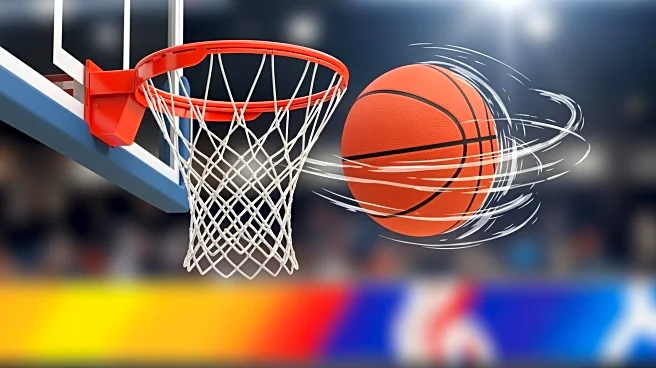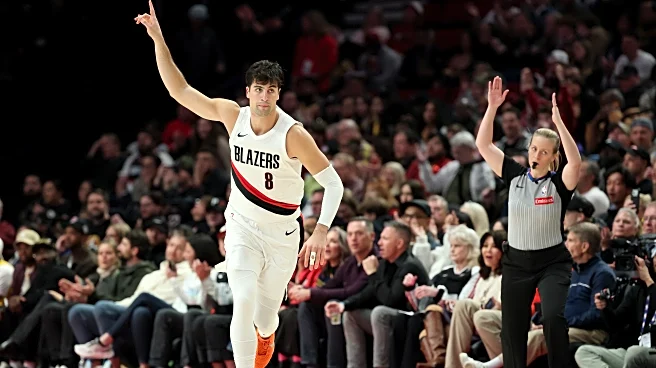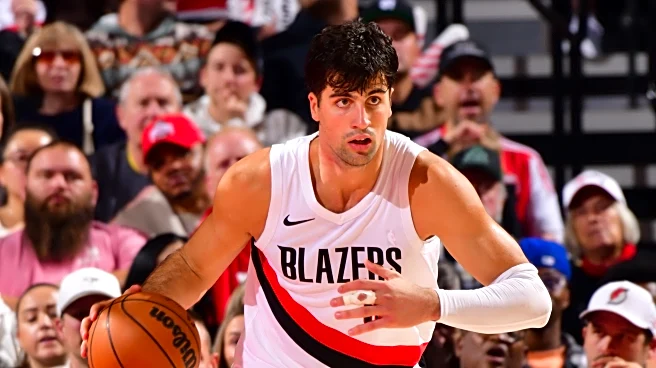When NBA games come down to the wire, you want the play and the skill of the competitors on the court to determine the outcome of the game. The last thing you want is some dork in a gray shirt to blow
a shrill whistle, stop play, and completely change the outcome of a close game.
That’s almost exactly what happened late in the Portland Trail Blazers’ come-from-behind win last night against the Oklahoma City Thunder when Blazers forward Toumani Camara was whistled for a shooting foul on the Thunder’s Isaiah Joe with the Blazers up three with less than a second to go.
The Thunder heaved a three, got their own rebound, then – when Deni Avdija failed to foul on the floor to send the Thunder to the line for two – Oklahoma City kicked it out to the open Joe at the top of the key who attempted what in the moment looked like it may have been a three.
Camara contested. Joe shot with his foot barely on the line, and landed a good two feet in FRONT of the line. Camara, who started and finished with his feet planted well inside the line, was whistled for the foul, ostensibly for taking away Joe’s landing space.
This appeared to be a textbook example of part of what the NBA made a point of emphasis for this season: landing space for shooters.
However, in that explanation, Senior Vice President Head of Referee Development and Training Monty McCutchen (yes, that is his real title) states that the closeout needs to either “make contact” and
“not provide opportunity to return to the floor safely” to require a foul. It’s also worth noting that NBA officiating interpretations change over time, and a number of years ago the NBA made an explicit emphasis on not rewarding players for kicking their legs out during a shot in an attempt to create contact:
Officials will emphasize the “Reggie Miller rule” for a shooter who kicks his legs out during jump-shot attempts to create contact and draw fouls. Officials plan to call offensive fouls on shooters who blatantly kick out their legs to initiate contact.
While interpretations like this are of course subjective, I find it hard to argue that Camara was the one who “made contact” with Joe since Joe jumped several feet forward into a nearly-stationary Camara.
With all of that said, NBA officials have released their Last Two Minute (L2M) report for last night’s contest, which evaluates every call and non-call made during the last two minutes of games that are “at or within three points” in the last two minutes of a game.
The L2M report states the following about Camara’s foul on Joe:
Camara (POR) moves into Joe’s (OKC) space and initiates contact with his right leg/foot that affects his jump shot attempt. After communicating with the Replay Center, it was determined the foul occurred prior to the expiration of the game clock, and the game clock was reset to 0.5 seconds. Additionally, Joe’s right foot steps on the 3-point line as he begins his upward shooting motion, and play resumes with Joe shooting two free throws.
To that I say: bull pucky. Camara moved a few inches from when Joe released the ball and he landed. Joe moved several feet.
Despite the call and the interpretation, Portland won the game, and I guess in the end that’s all I really care about.


